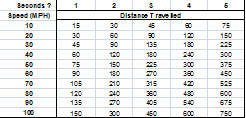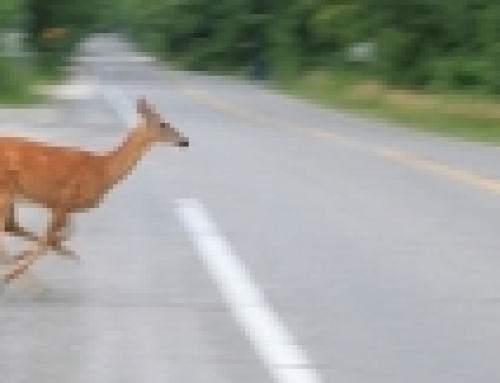
Riding in Formation: Mind The Gap
The greatest thrill as a Road Captain is safely leading a large group of skilled riders on a sun-filled day across miles and miles of open country roads. Your senses are filled with the cacophony of sights and smells that one can only experience on a motorcycle. As much as my riding partner, Jan, enjoys sharing my Road Captain experience from the rear seat, she said being in front of the pack had two drawbacks. First, all the fun and riding action happens behind us, and secondly, being somewhat derriere-conscious, she was concerned of the profile she projected from the rear. Well, I couldn’t argue with the first point. I tried to reassure her and not worry about the latter. No one would have trouble seeing my hand signals with her on the bike.
As Tail Gunner you get to see the best and worst of peoples’ group riding skills. There is nothing more inspiring than to see 25 bikes ahead of you maintaining the 1 and 2 second spacing between bikes (as prescribed in G.R.A.S.S. class) as we glide around the undulating curves and hills and dales of the countryside. On the other hand, there is nothing more frustrating than to see experienced Top Cat riders fail to maintain close formation, get lazy, and let the bikes in trail stretch out sometimes to two and three times what they should be. This is not only poor form, it is also unsafe.
Let’s review why we ride with 1-2 second spacing, then what impact just a couple of seconds difference in separation can make.
The primary reason we ride with the 1-2 second spacing is SAFETY. At that distance (which depends on speed) the rider following in the same track should have ample time to react safely to most road situations. Riders in the adjacent track ‘own’ a section of the entire lane in front of you if they need it to navigate the road safely. Maintaining those separations consistently provides a ‘cocoon’ of safety for the entire group.
Keeping the group together in close formation has other benefits as well. First, it discourages other traffic from cutting into our formation creating hazards for our riders. It increases the chances the group will make it through traffic signals intact. When that does not occur, the separated groups can reassemble easier down the road. It also shows respect for others following the group by maintaining a smaller yet safe ‘footprint’ of riders on the road taking up less roadway from other traffic.
How Close is Close?
We all know how to calculate the separation distance while underway… pick a road sign or seam in the road and when the bike in front crosses it, count “one one-thousand, two one-thousand” for two second separation. If you cross the mark sooner than ‘two one-thousand’, you’re following too close. If you cross it afterward, you are too far behind.
So what is the actual distance we are separated in feet, and how long is the entire procession of bikes? That depends on the speed we are travelling.
One MPH = 1.5 FPS (Feet Per Second)

At 30 MPH you should be 45 feet behind the bike adjacent and 90 feet behind the bike in front of you…about 9 bike lengths. At 60 MPH the distance doubles to 90 feet adjacent and 180 feet (18 bike lengths) behind the bike in front. It may seem like a long distance, but you’re only two seconds from the fender in front of you!
On a ride that includes 25 bikes, following the 2 second separation rule, the length of the ‘procession’ would be about 1,210 feet at 30 MPH …slightly less than a quarter of a mile… assuming an average bike length of 10 feet. At 60 MPH that distance will about double to almost half a mile… that’s if everyone maintains the proper spacing.
Now if the separation increases by 1 or 2 seconds (or more), as sometimes happens at higher speeds, the length of the procession for example at 60 MPH can approach three quarters of a mile or more. An extra 1 or 2 second difference may not seem like much to an individual rider but collectively in a large group the impact can be significant. At that point the group can become fragmented and the integrity of the ’cocoon’ can become compromised. This results in a less safe riding environment for the entire group.
Bottom Line: Mind the Gap!
Riding in formation is a learned skill and takes practice. It is a core riding skill that all Top Cats are encouraged to master such that you can consistently maintain proper and safe separation at all road speeds and conditions when riding in our group formations. I’ve known riders who have ridden for over 30 years and can’t track straight in a turn or hold a consistent speed. They can become real hazards in a group formation.
If you are new to group riding and uncomfortable maintaining consistent track, speed, and separation, let the Road Captain know. He will put you near the rear of the pack under the helpful eye of the Tail Gunner. The Tail Gunner will work with you to ride within your comfort zone for the day and not be disruptive to the safety of the rest of the riders.
During the ride, keep the formation close, from the head of the line to the end. When the gap widens, close it safely at the earliest possible opportunity. When I’ve had riders tell me they want to have a more leisurely ride paying less attention to spacing and want to ride at the back of the pack. I tell them that’s fine, just don’t ride with us on that day. We expect the entire group to follow our ride protocol and separation guidelines at all times, front to back.
Ultimately you are responsible for your own safety. Don’t override your skill level and endanger yourself or others. Practice riding in formation with two or three other riders. In fact it’s a good idea to follow the separation guidelines whenever you ride to continually develop and hone your skills. If you have any doubt about your skills or impacts to the safety of the group prior to a ride, have a chat with your Road Captain. He will get you placed into a safe position in the line to help you feel more comfortable and give you a chance to see how the more practiced riders maintain good group riding formation.
Ride Safe!





